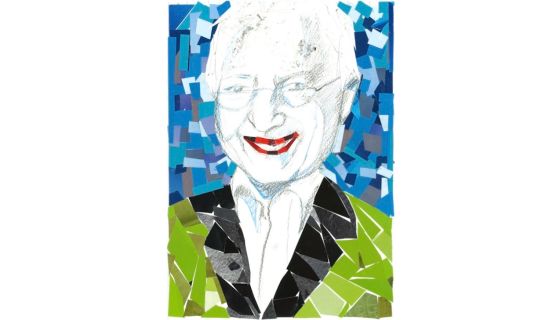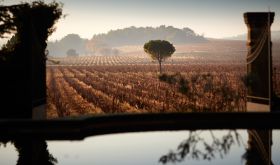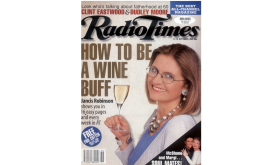Charlie Foley writes Charlie has been an Auctioneer and Wine Specialist for Christie’s since 2014. He graduated from Newcastle University, where he achieved 1st Class Honours in Classics, specializing in the ancient wine trade in Rome and Greece. He has worked for vineyards in South Africa and Argentina and studied for the Master of Wine. He conducts auctions around the world for Christie’s and charities and also appears on Channel 4’s The Greatest Auction. He was mentored by the late David Elswood of Christie’s and has worked on sales such as The Avery Family Collection, the Cellars of the Earl of Halifax and Wines from the Malbec Family Collection. He was the first auctioneer to sell a bottle of The Macallan 1926 for over £1 million
There is an element of working at an auction house that is Dickensian. A cast of colourful characters, chaotic piles of paper and mementos in corners and glasses of Sherry (playfully called Sack) for afternoon ‘pep’. As a junior in the Christie’s Wine Department, I had a Kit Nubbles errand-boy type position, carrying boxes, collecting the post, making lists and sending invitations. It was a job I had fallen into, as any job in the wine trade usually is. Clutching a degree in one hand, but a glass of something red and delicious, more tightly in the other. And the distinguished character whose feet I fell at was Michael Broadbent MW. Michael was, by then, long retired from running the Department. He had more of a Poppinsesque Mr Dawes Senior role at Christie’s. Like the aforementioned Chairman of the Fidelity Fiduciary Bank, Michael only joined us on important jobs and events. He was the doyen of fine wine, who had re-established the Wine Department at Christie’s in 1966. Claret had featured in the first sale by James Christie in 1766, but the wine auction industry had fallen by the wayside in intervening decades, to be replaced by Chippendales, Gainsborough’s and commodes. Michael persuaded Peter Chance, the bluff, red-faced Chief Auctioneer at Christie’s that the wine auction market could be re-ignited under Michael’s direction. This moment sparked the modern era for international fine wine sales.
More importantly, however, Michael, established himself as the authority and most significant arbiter of wine criticism. He began in 1952, writing notes on every wine he tasted in little red books. These books were used to form his editions of the seminal work on fine wine, ‘Vintage Wine’. There is not a week that goes by when I do not reference his book, with vintage notes stretching back on Bordeaux, Burgundy, Port, Madeira and others back to the mid 1700s. He paved the way for future eminent critics such as Jancis Robinson MW, Robert Parker and Antonio Galloni. His skill with his pen earned him a place as Decanter Magazines longest running columnist. His scrapbooks, columns and wine notes litter our offices in St James’s. He is like the exposed root of an oak tree in your garden, which courses through the fabric of our work, even after his passing.
In 2016, the wine team spent 6 weeks in John Avery’s cellar in the English countryside. John had been a contemporary of Michael’s prior to Christie’s, when they both sold fine wines in Bristol. John was a famous bon viveur and fine wine hoarder and his cellars were a spectacular sight. Michael, by then in his late 80’s, joined us to inspect and taste from the cellars. It was late summer and the table was laid for lunch. Michael arrived in white linen and a Panama hat, in the passenger seat of a sports car. He was clutching his red book. He made a beeline for the wine selection. He helped uncork and decant a line up of Claret, Burgundy and New World wines and then tasted through them with his pen scratching away at his book. Listening to him speak about vintages was a moment I will always remember. He did so, not just as someone who has memorised weather conditions and harvest quality from a book, but rather as a farmer remembers the hail of ’78 or the fisherman recalls a storm of ’82. He had lived through these vintages and took notice of them and the way Mother Nature would impact the produce of each subsequent year.
I often think about him now when I stand in Christie’s rostrum, though I never saw him in action. He was a famed auctioneer, but apparently not a natural at keeping calm whilst adding panache. I think rather, he saw an opportunity and a void and decided to fill it. Being an entrepreneurial soul in a business that lives or dies on sales has always been key and Michael understood that before most. He was a networker, a grafter, a gentleman and also an academic, which is a rare combination in a trade which often sees academics and traders at separate poles. I suspect we shall never see the like of Michael again, the halcyon days of the wine trade he presided over have passed. The great Stately Home cellars, the pre-war vintages, the gentleman’s agreements and the classical Francophile view of the world of wine. The wine trade is a richer place now; greater diversity, both of product and people, a greater sense of inclusion and an attuned focus on the future rather than the past. However, there is much to thank the grand Godfather of Fine Wine for, his sense of fun, his meticulous notetaking, his work ethic and his infectious love of this special liquid we wine-lovers dedicate ourselves to.
The image above is the author's own work.













